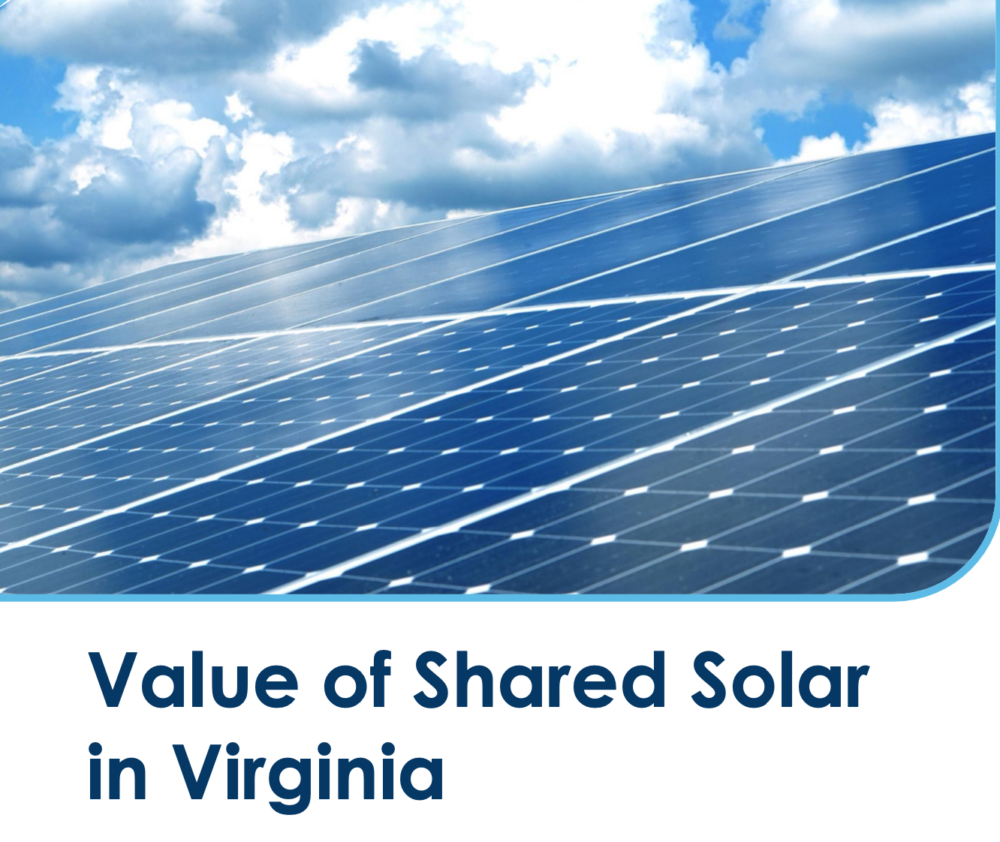
RICHMOND, Va. — A new analysis confirms that utilities have overestimated the costs and underestimated the benefits that Virginia’s Shared Solar program brings to the grid. The report from Dunsky Energy + Climate Advisors, commissioned by the Coalition for Community Solar Access (CCSA), is the first of its kind to take a comprehensive look at the full range of shared solar benefits, including avoided generation, transmission, and distribution costs that utilities should not be passing down to ratepayers. The value of the Shared Solar program as an investment in Virginia’s clean energy future is undeniable when these benefits are taken into account.
The report finds that expanding the program to deploy 2,000 MW of shared solar by 2035 could result in more than $5 billion in benefits from 2024 to 2050. These benefits result from costs that will not be incurred to serve ratepayers in the state’s two largest utilities, Dominion Energy and Appalachian Power Company (APCo), based on data and assumptions from these utilities’ own filings before Virginia’s State Corporation Commission.
The report directly contradicts utility claims that the current highly burdensome minimum bill is necessary to make sure solar subscribers pay their fair share of the grid. Instead, the report found that the current compensation for Shared Solar in Virginia does not fully reflect the value the program brings to the utilities and all ratepayers.
Since Virginia launched its Shared Solar program in 2020, it has been mired with steep minimum bill costs and limited program size — preventing most utility customers from having the opportunity to sign up to shared solar and save on their utility bill. These policies restrict communities and businesses’ access to solar energy, while also hindering the Youngkin Administration’s goal to increase industry-wide competition and consumer choice by removing barriers to shared solar.
“It’s unfortunate that Virginia’s Shared Solar program was launched with artificial obstacles preventing residents from accessing the benefits of affordable clean energy,” said Charlie Coggeshall, CCSA’s Mid-Atlantic Regional Director. “Dunsky’s finding should help bring Virginia back to the drawing board to expand shared solar for the benefit of all ratepayers.”
“Our analysis found that expanding the Shared Solar Program can offer substantial benefits — on the order of $125M in the first 3 years alone — to Virginia’s utility customers, including to those that do not participate in shared solar. Those system-wide benefits accrue by offsetting the utility’s transmission charges, deferring transmission and distribution upgrades, and avoiding generation costs,” said Anirudh Kshemendranath, Consultant at Dunsky.
Due to its small-scale, distributed nature, shared solar can also benefit Virginia’s energy infrastructure by strengthening the power grid and making it more resilient against large-scale disruptions. It also avoids transmission and distribution investments, all while offsetting volatile fuel costs.
“Shared solar projects have the benefit of fitting on small tracts of land and mesh well with the state’s landscape, agriculture, and other land uses,” added Jake Springer, Mid-Atlantic Policy Director at Nexamp. “This analysis shows that these local benefits are accompanied by savings to all utility customers in the Commonwealth.”
Over the past decade, the number of states that have enacted policies to support third-party community solar has expanded from just a few to 18 states, including Washington, D.C. A collective 5.6 gigawatts (GW) of generation capacity has been installed to date, and Wood Mackenzie’s most recent US community solar market outlook predicts that there will be 6.2 GWdc power installed across the country by the end of 2023.